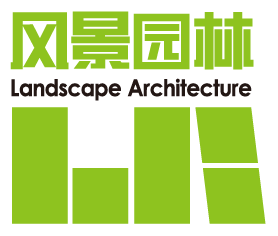Abstract:
Objective Urban development has always been intricately linked with the natural environment, characterized by a dynamic and complex interplay involving the dependence on, and utilization, management, degradation, and restoration of natural resources. This research aims to clarify the theoretical foundations and practical significance of the concept of “nature city”, and to explore its viability as a paradigm for sustainable urban development in the future.
Methods This research combines documentary research with inductive analysis. By reviewing the evolution of nature-related thought, the research systematically examines classical theories and representative models in the fields of landscape architecture and urban-rural planning, and extracts their shared characteristics, based on which it constructs a contemporary cognitive framework that reflects current sustainability challenges and values.
Results The research identifies three major views of nature that have shaped urban planning through history. The ancient and intuitive view emphasizes the harmony between humans and nature, believing that the city is deeply dependent on natural resources and influenced by cosmological and religious perceptions in terms of spatial organization. The mechanistic materialist view, by contrast, focuses on science, rationality, efficiency, and order, treating nature as a resource to be conquered and reshaped. This has led to a deterministic understanding of the environment and contributed to problems such as poor sanitation and urban overcrowding. The dialectical materialist view considers the city and nature as an interacting whole and advocates for a new mode of coexistence and symbiosis between the two. Historically, urban construction has demonstrated different interactions with nature, including adaptation, intervention, and reconciliation. Prior to industrialization, ancient Chinese cities followed natural patterns and displayed unique wisdom in adapting to, managing, and aesthetically shaping nature. Ancient Western cities similarly relied heavily on environmental factors such as topography and hydrology. Even rationalist and romantic landscape traditions influenced urban form. The advent of industrialization brought about new modes of production, social structures, and lifestyles, drastically reshaping both the natural environment and social systems, resulting in challenges like public health crises, urban sprawl, and environmental degradation. In response, Western societies began proposing solutions to urban issues through improvements in the material environment, aiming to construct more harmonious and efficient cities. Theoretical and practical responses included the Greater London Plan, linear city, industrial city, park system, garden city, satellite city, regional city, Radiant City, neighborhood units, Broadacre City, and organic city. In the post-industrial era, Western urbanism evolved into ecological city, resilient city, healthy city, green city, new urbanism, biophilic city, and landscape city. In parallel, Chinese planning introduced models such as Shan-Shui city, garden city, ecological garden city, forest city, sponge city, livable city, low carbon city, park city, green-network city, and green-health city. A historical review shows that nearly all ideal city models seek to closely integrate urban form with nature, striving to coordinate urban ecological systems with human cultural systems. They emphasize the combination of rational infrastructure and natural environments to sustain both urban life and cultural prosperity. In essence, these models can be understood as varied expressions of the nature city ideal. Nature serves as both the intrinsic attribute and sustainable foundation of human settlement environments and ideal city models. The nature city can be structured through six core dimensions: Spatial configuration, urban culture, environmental health, development patterns, social equity, and urban aesthetics. These correspond to six conceptual types: Compact city, regional city, ecological city, organic city, inclusive city, and poetic city.
Conclusion The nature city represents an extension of urban and landscape theory. Confronting the multifaceted challenges of global climate change, ecological degradation, and erosion of local urban culture, the nature city concept offers a forward-looking development model that guides cities toward greater sustainability. It provides both a theoretical foundation and a practical direction for building healthier, more resilient, ecological, and aesthetically enriching urban environments. Looking ahead, the nature city will continue to evolve along six distinct trajectories. 1) At multiple spatial scales, cities will integrate natural elements — mountains, water bodies, forests, farmlands, and grasslands — into adaptive spatial structures. Compact development will support efficient human settlements. 2) By preserving regional cultural contexts and interpreting the symbolic meanings behind urban natural patterns, cities will build culturally resonant living environments. Streets, parks, squares, rivers, and wetlands will become carriers of place-based identity and spiritual belonging. 3) Attention will span both macro-scale ecological systems — such as ecological networks, watershed governance, and corridors — and micro-scale interventions like rooftop greening and rain gardens. Cities will function as vital ecological nodes in broader environmental systems. 4) The implementation of the concept of “nature city” will be facilitated by advanced ecological planning methods, green infrastructure design, and smart city technologies, fostering a renewed symbiosis between humans and nature through nuanced spatial design. 5) Inclusive public space networks — community gardens, green corridors, and park belts — will provide spaces for interaction and social cohesion. Varied natural spaces will stimulate neighborhood vitality and transform public areas into civic stages. 6) Beyond ecological and functional goals, cities will pursue poetic and humanistic environments to evoke aesthetic resonance and emotional connection to nature, making nature the emotional and perceptual backdrop of urban form.

 下载:
下载:
